From cleaning bathrooms to raising $3.1M for a cancer prevention startup
and how I did it
Fifteen years ago, I succeeded in my first negotiation. As a twelve year old child, I would spend nights during the summer with my parents cleaning middle and high schools. It wasn’t a glorious job, but with no knowledge of English it was one of the few that they could find and I had little else to do. At the end of the night, they would give me $10.
After a couple of weeks like this, I picked up on the fact that this was a poor deal for me - I had just helped them out for six to eight hours, putting my hourly wages at a depressing $1.25. When I pointed this out to my mother, she thought for a moment before agreeing to double the amount. I had managed to negotiate a 100% wage increase - an auspicious beginning.
~~
Five years later, cleaning engulfed my life. My father had exited the Picture and my mother did not know how to drive, so scrubbing high school bathrooms with her became my life from the afternoon to the wee hours of the morning. My mother and I became comrades-in-arms, scrambling to figure out taxes, repairs, work and home. I took on a job working at a gas station (I had to pretend to be older to get that job - my alibi was being a Georgia Tech student) 20 hours each weekend to arrange enough money together for my own independence. This job had its own form of beauty: the ultimate exposure to the world - everyone needs gas, rich or poor.
I slept during class.
~~
This past October, I told my mother I was going to start a company. Cancer prevention seemed doable and it was as good a life mission as any, but it’d require a decent amount of cash to get started so I’d embark on a fundraising quest first.
Her first reaction was to relay me a story about how a scientist who had discovered the cure to cancer was shot down over Copenhagen by Them. Who Them was is unclear, but she had always had a bit of a conspiratorial flair.
When I informed her that this was nonsense, she spent a long hour telling me that this was a dumb idea, that it was not worth trying, that this was an endeavor that They would do but not people like Us. In this instance it was more clear who They were - it was those who did not spend their childhoods cleaning bathrooms.
This speech was, if anything, motivating. If They could do it, then so, perhaps, could I.
The journey to becoming a founder
Most of this article will be my path through fundraising, with the hopes that it will be a helpful read for those embarking on a similar journey - particularly those coming from rougher backgrounds. But first, some context:
My mind first turned to startups about a year out of undergrad when I was working for a company working on CAR-T immunotherapies. I loved my time there - it was a wonderful environment of brilliant people working on incredibly challenging scientific problems. Each day I came to work, I had the opportunity to help make life-saving cell therapies for cancer patients a little better.
But these cell therapies cost hundreds of thousands of dollars each, and were largely only relevant to the most terminal of the most terminal cancer patients. Tragically and poetically, this was around the same time that my father underwent multiple circuits of radiotherapy and immunotherapy and steroids (to treat the side effects from the immunotherapy) to treat a melanoma that spread to his brain. He would ultimately succumb to the disease after battling it for three years.
All of this sparked a fire to rethink how we tackle disease. I found the work that I was doing meaningful, but it would have been better to have prevented the cancer from existing in the first place. The main risk factor for cancer, as with most diseases, is aging. Thus, it made sense to go find the causes of aging and slow them down - an idea known as the geroscience hypothesis1.
I wasn’t sure how to effect change in this direction2. I looked for low hanging fruit and found none - scientists haven’t identified any compounds that meaningfully slow the pace of aging except for rapamycin, which was isolated in the 1970s3. My takeaway from this was that the field must be missing something pretty critical, so I opted to invest a few years in thinking very hard on the problem through a PhD. I applied to exactly one PhD program - the Biology of Aging PhD at the Buck Institute - and spent time working in labs that were too big to pay me much attention, allowing me to spend most of my time thinking about what aging is. The PhD path is not in vogue, but for me it felt very intuitive. Aging is the mother of all problems; it should not be surprising that tackling it correctly will take at least a few years of deep focused thinking.
Despite going into it with a hermit-esque “I am here to isolate myself in the mountains and think about aging” philosophy, my PhD experience ended up being fairly community oriented. I am still reflecting on why community was so important on this intellectual journey, but my suspicion was that it is deeply beneficial to have an environment in which people can quickly tell you that your ideas are not very good. There are countless times when I had some concept around aging that ended up being quickly shut down by a friend with a reference citation to some obscure paper from the 1980s. It’s much more difficult to have these rapid creative iteration cycles alone.
I wrapped up the PhD roughly three years after starting it. I had two major takeaways:
Aging becomes exponentially more difficult to tackle as we get older, and thus we need to address the root causes of it as early as possible. Ideally, beginning in our 20s.
One of the most important of those root causes is genome instability.
Finding ways to make a company out of these takeaways was not easy, but ultimately I arrived at the idea of creating therapeutics to prevent cancer. It sets up the company to directly target improving genome stability, and ‘preventing cancer’ is one of the relatively few reasons young healthy people would take a drug (at least, the FDA-permitted kind). Now it was time to go out and build it.
For this, I needed money.
Strategizing fundraising
Before going out and fundraising, I sat down and reflected deeply on my strengths and weaknesses. There were a number of tailwinds:
I knew my stuff. I had made a point of reading three papers every day during my PhD, which came in very handy when I would bludgeon a VC’s diligence team with my encyclopedia’s worth of knowledge on what I was doing.
I believed in what I was building and was obsessed about it. One very helpful biotech founder advised me to make it clear to VCs that I was going to be fine without them, to be the “pretty girl at a party.” In my case, this was very much true (the belief part, not being a pretty girl), and I would work on this problem regardless of how much money I’d end up fundraising.
I knew the game, kind of. In my time in VC I had the chance to see hundreds of company decks - those that were great and those that were terrible. I knew at the very least that I could field my pitch without missing something fundamental. I also knew that there are certain hard-to-describe perception factors that VCs look for that I was able to check - completing my undergrad at Stanford, a propensity for wearing leather jackets, projecting confidence, etc.
And also a couple of minor headwinds:
The market was not in my favor. At the end of 2024, the pre-seed environment for funding biotech startups was horrible and was quickly getting worse.
I had literally nothing. I did not have an asset nor a target nor a co-founder nor a team nor previous founding experience nor any preliminary data nor anything else that could be worth anything to anyone.
Taking all of these factors together, it made sense to try to raise $2-3 million dollars.
In case this seems ridiculous, an investor I admire introduced me to the world of VC incentives a few years ago at a retreat organized by the Longevity Biotech Fellowship. He said VCs care about three things:
Team. So much of company building is executing properly.
Moat or “defensible magic.” If anyone else can copy it, then it is not going to retain exclusive value for very long.
Potential to be a billion+ dollar company. Most VC investments fail. To make returns, the few investments that don’t fail need to be massive successes.
I slotted into this framework very nicely. As a lone voice in the desert obsessed about this field, I was one of the very few choices for investors interested in backing it. The technology is easily patentable, and by targeting disrupting all of cancer I chose a pretty large market.
Of course, none of this felt very real to me. I distinctly remember helping my parents with their tax returns (they were illiterate in English) and seeing the annual income of 70+ hour workweeks totaling to a maximum of $40,000 from both of them combined. But I learned quickly to separate myself emotionally from the fundraise amount and treat it as a means to the end goal of improving genome stability - which it is.
In any case, I did need to correct for some of my weaknesses as a founder, which was the first thing I did.
The primary perception flip I needed to do was to convince potential investors that I am not someone who is crazy, but rather someone who is crazy and is on to something big. This could be done by finding advisors. I reached out to about a hundred experts who I saw as potential advisors and had meetings with about half. I offered advisory positions to those who either filled critical gaps in my knowledge or asked particularly insightful questions.
With the company idea in mind, a team of enthusiastic scientific supporters, and a target fundraise amount, I was ready to shoot my shot.
Beginning fundraising
Fundraising for a pre-seed is common enough to where there is a standard playbook. I will describe how most people approach it, and where I deviated.
The usual strategy is to create a massive spreadsheet list of every VC you think could possibly be interested in investing. You rank them in tiers and then ask everyone you know if they could provide you to an introduction to the highest-possible-ranking person at any of those VC funds4. Once you have your list of potential VCs and potential introducers, you give the bugle call to send the introductions and schedule all of the meetings at the same time - starting with the “worst ranked” VCs first. You then tell everyone you have a ton of interest in order to drive momentum and hype.
The core problem that this tackles is the fact that investors have a natural preference to wait. The longer they wait, the more information they have. By scheduling everything all at once, you force them to make decisions quicker as otherwise there’s some risk they’ll miss out on the deal. There’s also a tendency to try to remain as cool and quiet as possible through the entire process to generate excitement and FOMO.
My strategy was much more chaotic. I avoided the tier tactic, mostly because I knew I would tune my pitch depending on feedback and I did not want to over-index on the opinions of folks that I didn’t want to invest anyway. I did schedule every call at once - but then I just kept going, adding on dozens of additional investor meetings week after week after week. I abandoned the “be cool” vibe entirely in favor of the perception that I was manically obsessed with solving a critical problem that everyone else is overlooking, which was much more authentic anyway. I solved for time pressure by initiating fundraising in October and telling everyone I would close the round by the end of the year. This was an arbitrary deadline to investors but a practical deadline for me, as I would run out of personal funds at that point and would probably annoy my housemates by not having money for rent.
Choosing to pitch ad infinitum was tough, but was a battle to which my background prepared me for.
Relentlessly continuing despite all odds and despite repeated failures was a feeling I had become deeply familiar with over the years. In the course of fundraising, I pitched over a hundred times and had dozens of more conversations on top of that. My emotional armor around being told ‘no’ became very refined and practiced.
Early wins
My first few weeks of fundraising went well. This was due to a factor that I had not anticipated: giving a shit.
Most conversations around fundraising - this article included - come at it from the point of view of the founder. This makes it easy to talk about strategy and tactics as though the fundraising process were a wholly impersonal board game. VCs are used to being engaged with on purely transactional terms - as potential sources of funding, irrelevant as soon as they pass on an opportunity.
However, VCs are human beings too [citation needed]. There were a few investors that I had made good relationships with over the years without any expectation of an investment, and reaching out to them led to me raising $1M within a couple of weeks. My days working at a gas station had imprinted on me a sense of trying to see people for who they are instead of for what they can provide for me, and this ironically ended up being very professionally lucrative.
In my brief time on the investing side, I had also created friendships with founders. My biggest surprise in all of fundraising was how much help founders were willing to provide for each other. There were founders who made 4-5 incredibly useful connections even without me prompting. There were founders who sat down with me for three hours over beers teaching me the very basics of company building without any expectation that I would ever return anything back to them. In every environment I had ever operated in, I had experienced some sense of crab mentality - this seems nearly absent among folks building early-stage biotech companies. It’s all camaraderie.
The early honeymoon phase was a good boost of confidence. Not doing the common strategy of prioritizing “lower ranked” VCs meant that I took a few rejections from VCs I respected, but I got very good feedback that was worth its weight in gold.
A few operational tips
This may distract from the overall narrative a bit, but here are some quick bullet points that are likely be useful for founders early on in the fundraising journey:
I found the 80/20 rule applies to almost everything. Many founders either create and design their own slide decks or pay a designer upwards of $1,500 to make one for them. In my case, I made my own deck and paid someone on Fiverr $150 to make it look aesthetic. I did the same for the logo. I was punished for not putting in the extra 20% effort later, but the time I gained by operating much quicker was worth it.
I did not worry about confidentiality. If someone wants to go steal my idea and does all the hard work of solving cancer and aging without me, then…
My life became so much less guesswork when I brought on an operational advisor to help sanity check some of my choices. He also unwittingly became a deeply appreciated emotional sounding board.
Good feedback was critical. I ended up changing the entire narrative of my pitch a month into the fundraise.
A darker period
At some point I hit a dead end and ran out of steam. I had enough VCs hem and haw and signal that they’d be interested for investing some amount, but it was unclear what amount and on which timeline5. Starting fundraising in October was a tactical decision aimed at speeding up the process, but both Thanksgiving and Christmas came and went without a completed process. For New Year’s, I threw a dart at a map on my wall and resolved to go somewhere far away. The dart hit Billings in Montana before falling to the floor, and so off I went.
There were a few assumptions I made that ended up not panning out. Given my scientific background, I expected the have the most traction among biotech investors. What I did not appreciate at the time was that biotech investors have something of a formula: find a particular protein target, then find some disease for that target, then find a drug that will hit this protein. My pitch - let’s target mutations to prevent cancer - fit very poorly into this formula.
I also found myself having to rapidly iterate on not on my pitch but also myself. I was a few months out of academia, and academia strongly frowns upon any sign of ego. I have a funny memory of giving a presentation at the Biomarkers of Aging conference, with my description of the work being ultra-narrowly tailored to the specific plot that I was describing without daring to stray into speculation or even implications. The same evening, I gave a pitch to a VC where my script was effectively “we will literally cure cancer.” It was a wild head-spin.
Eventually, things came together. I resolved to do a last call in January and wrap up fundraising, and this neatly aligned with finding a lead investor. I was not sure how to approach negotiating, but I came into it with two principles:
Treat negotiating on terms impersonally. I pushed for the best terms that I thought I could reasonably get, and pushed fairly hard.
Making sure everyone gets a fair shake. At the end of the day, the journey is long and it’s good for everyone to feel like they’re in it together like some grand adventure.
These principles led to some perhaps irrational choices. My first ever angel investor (who shifted me from “someone who has not raised capital” to “someone who has raised capital” - a critical binary shift in the eyes of many VCs) committed $500,000 in October on much worse terms than our lead investor negotiated in January. My lawyers informed me that the time gap meant I did not have to do anything here; I chose to harmonize the angel’s terms to match those that the lead negotiated anyway. It was critical for me that the people who took a bet on me knew that I, in turn, would advocate for them.
Some parting thoughts
If you’ve never read Peter Thiel’s Zero to One, I’d highly recommend it. It’s useful, first of all, for understanding how people who have build big things think. More saliently, it begins with this absolute banger of a line:
If you’re trying to start a company, odds are high that you are inherently trying to swim against the current. This is because you’re doing one of the following:
Doing something that everyone else thinks is a good idea, in which case everyone else is doing it and you’re competing in a crowded field to be the best.
Doing something that few other people think is a good idea, in which case you’re trying to convince the world (and yourself) that you’re not insane.
Both of these require a great deal of bravery. There is skill and intelligence and EQ and knowledge and many other factors that come into the equation, but ultimately I found that the most useful muscle in my fundraising journey was resilience. Fifteen years ago, I negotiated a wage increase from $1.25/hr to $2.50/hr. Two months ago, I negotiated a term sheet to build a company to prevent cancer. The key commonality was believing that I could, and not stopping until I did.
The geroscience hypothesis is weird culturally in the landscape of longevity cliques. It’s not quite as radical as the immortalists (folks who are in it to live forever), and yet is too extreme for those focused on pure healthspan who do not dare to speak of lifespan extension. It’s simultaneously a radical concept yet one of the oldest philosophies in the field. I like it - it’s ambitious while remaining pragmatic.
For some context, this was the period during which the prevailing thinking was to just go and start some company; any company will do. I would echo Marc Andreesen’s thoughts on this general philosophy.
fingers crossed that IL-11 inhibition will be reproducible
Introductions are the currency of fundraising. You meet investors by an introduction from someone you mutually know. It’s a weird little courtship dance where you send your connection a forwardable blurb which they will then pass along to the potential investor like a Valentine’s Day letter. If the investor fancies you, they’ll ask to be connected via e-mail. I did not fully understand this ritual until fairly late in the fundraising process.
This isn’t in bad faith. Investors who write smaller checks are strongly disincentivized from committing capital until the round comes together - else they’re risking throwing money into a fire. There’s not much biotech founders can do having raised only small checks aside from paying their own salary.



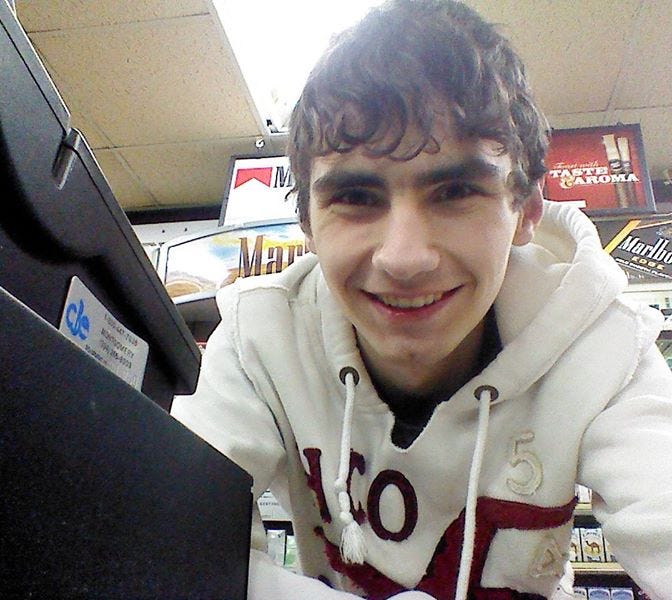

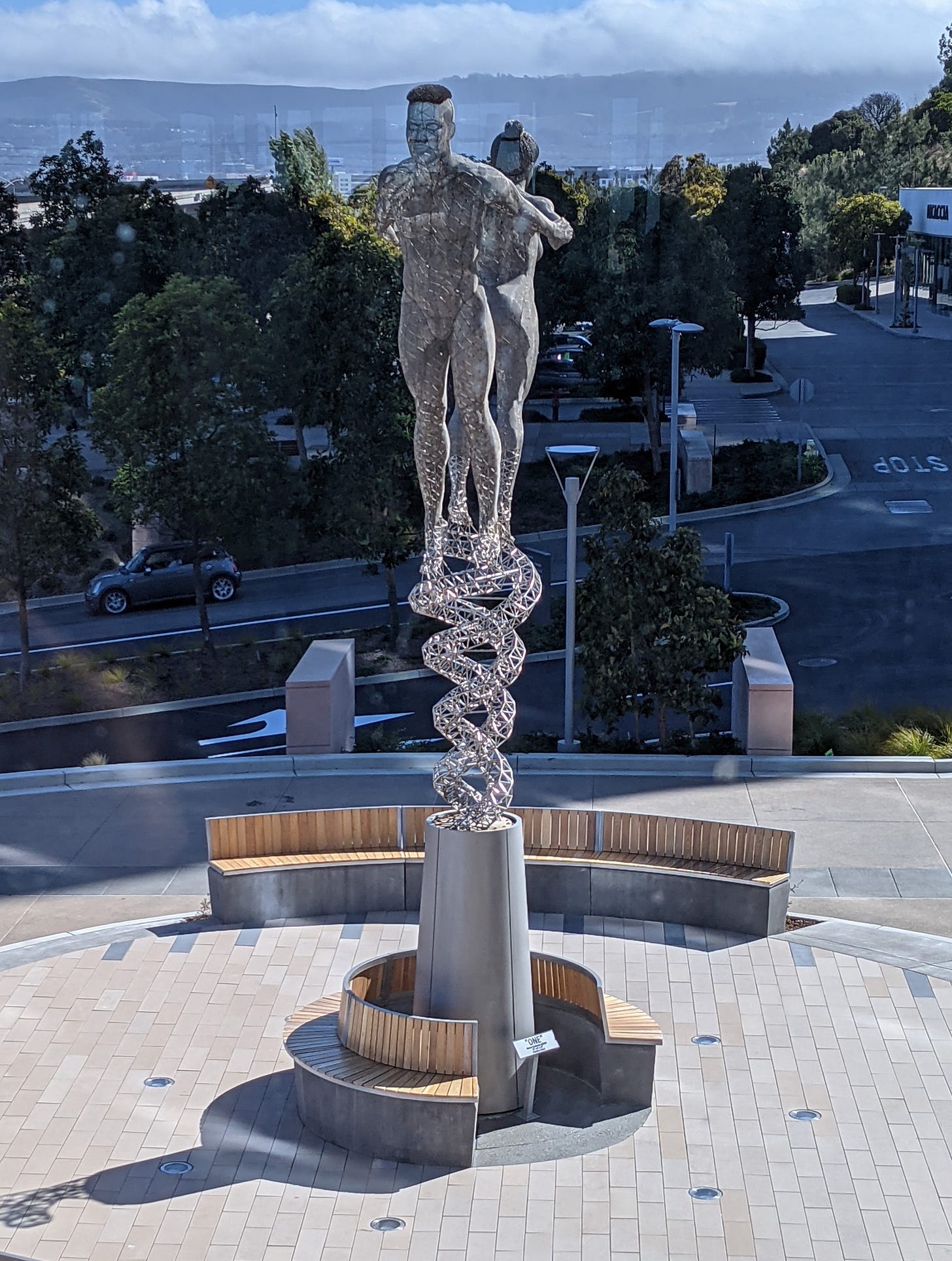


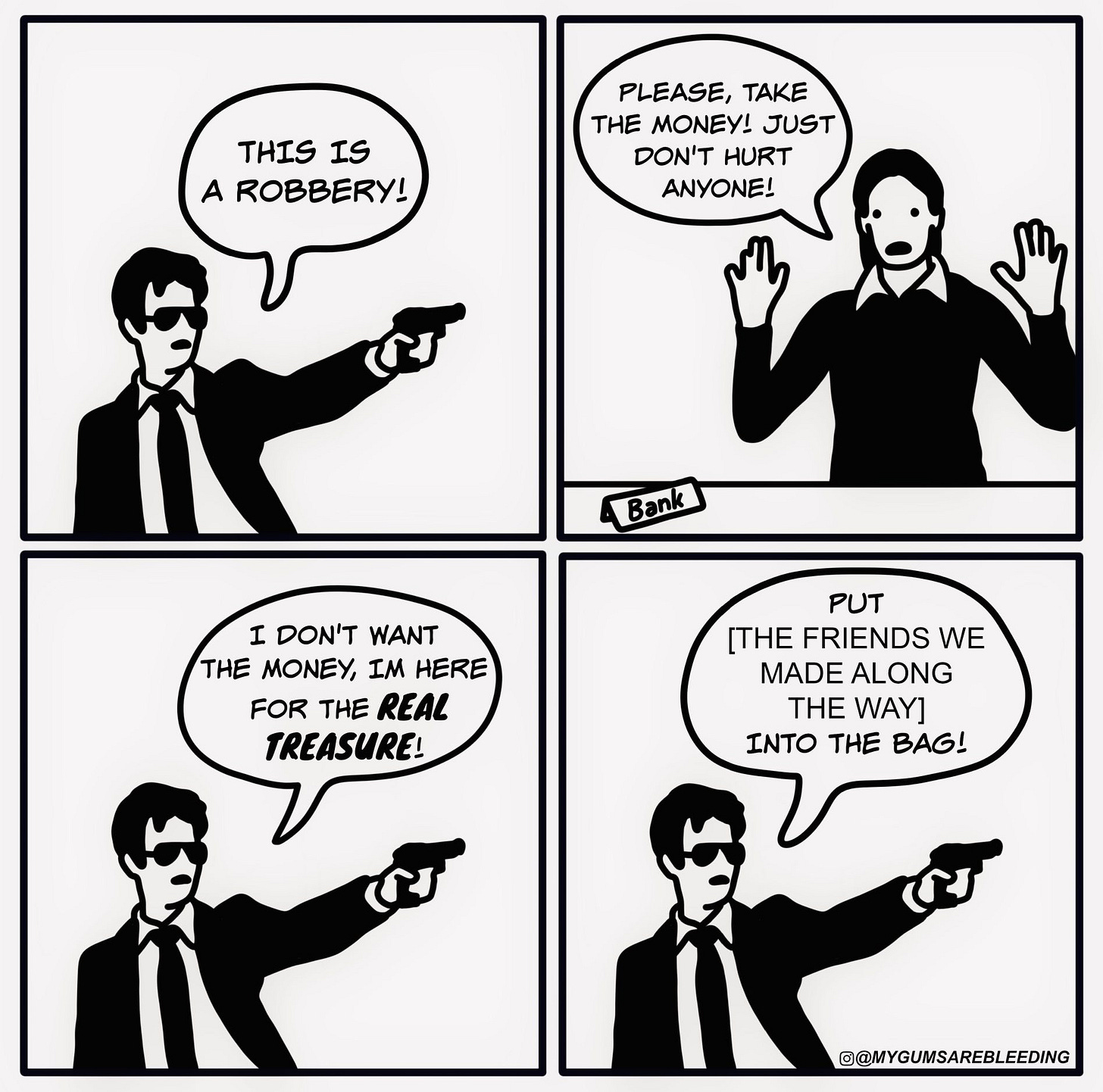

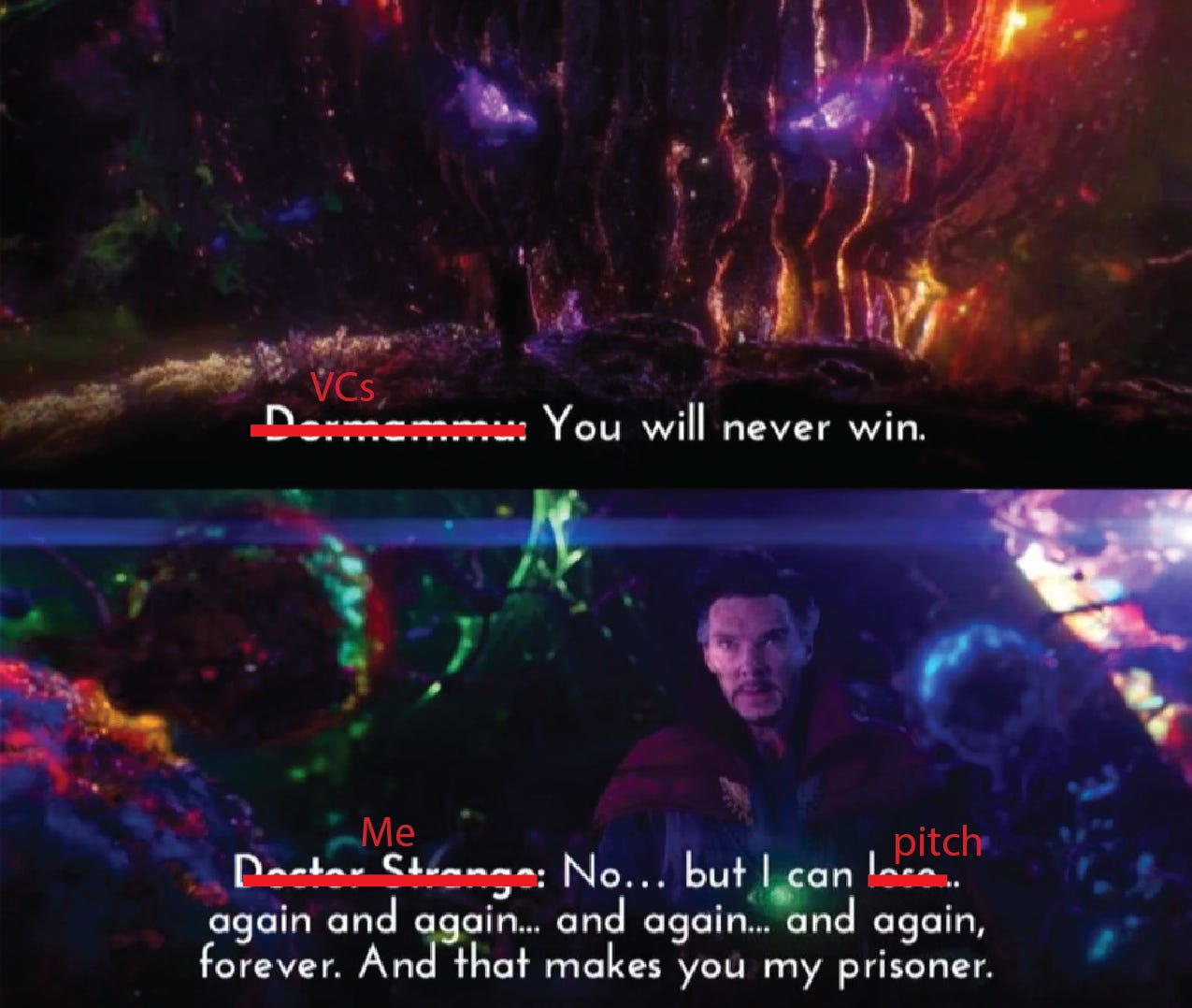

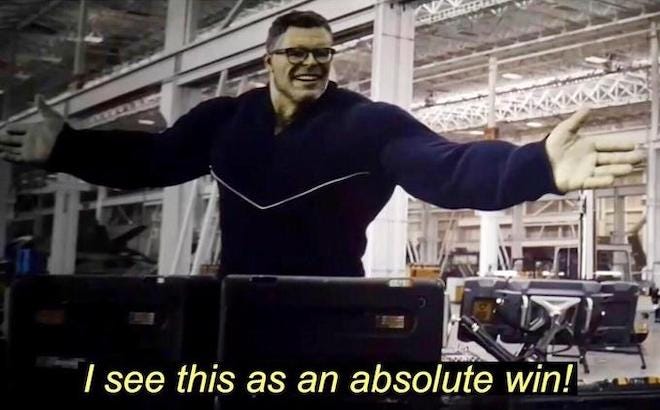



I keep reading this over and over again , when I think biotech is not worth pursuing as a career . You have inspired me Alan , to not leave what I love no matter how confusing and unrealistic the future looks like
My teacher gave me this article to read. All I can say is that it’s really inspirational to see how someone who starts at one of the hardest point in life can bounce all the way to the top. With an idea that only seems to grow with passion.